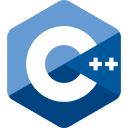The AOPS2 Patch settings dialog allows you to configure your patching system inside the launcher. Some options may not be available for all Editions.
General Settings
Window Title
Specify the Window Title to display for the patcher.
Window Size
Specify the size of the patch window in pixels (Width x Height).
Silent Patch (Developer Only)
Allows for a silent patch process. If you are using your own custom page in the launcher for the patching, you must enable this. You must also send the /S1 commandline in the action where you run the AOPS2 patcher.
Exit Launcher
Instruct the patching system to Exit the game launcher when the patching process starts. For obvious reasons, you should not uncheck this if you are embedding the patching system directly in your launcher page.
General Setup
Online Directory
This must be the full, absolute URL to the online folder where your latest patch files are stored (example: https://myserver.com/patch/files/). This folder must be accessible for the patching system so you may need to set permissions correctly.
Online Patch File
This must be the full, absolute URL to the online patch list file. This file must be accessible publicly. You can test this by typing this URL into your web browser and seeing if the patch list shows (or downloads). (example: https://myserver.com/patch/patchfilelist)
Online Salt
This must be the full, absolute URL to the online salt file. This contains your hash salt. You must not use # or | characters inside your patch salt. (Example: https://myserver.com/patch/salt)
Custom Extension
You must specify the custom extension you wish to use for your patch files. This can be absolutely anything you want, although we recommend keeping it to something that has never been used before (or GLC is fine).
By using a custom extension, most of this can be avoided, resulting in a flawless patch system.
Compression (Developer Only)
Here you must specify the compression ratio to use for your latest game patch files. This uses LZMA2 compression. The range is 0 – 9 with 0 being no compression and 9 being the highest form of compression.
You MUST make sure the files are not in use by the operating system or another application. This too, can throw errors as the file must not be in use in order to be compressed.
Splash Screen
Splash Enabled
You can toggle whether the splash screen is enabled or not.
Download Splash
You can toggle this to ON to tell the patcher to download your splash screen from your webserver (formats supported: JPG, PNG, BMP). You must specify the full, absolute URL to this (example: https://myserver.com/files/splash.jpg)
Show in Silent Patch
Even if you are running a silent patcher, you can still choose to display your splash screen to the user.
Splash Timer
You must specify in frames, how long to display the splash for. 60 = 1 second, 120 = 2 seconds. Seconds are in increments of 60. For 1 minute, use 3600.
Base Installer
You can choose to assign a Base Installer to your patch setup, should certain conditions be met. A base installer is a good option if the user runs the launcher for example, and it appears your game isn’t installed or something is missing. You can then choose to download your base installer and then run it, so the initial installer can be run for your game.
For example, below, you can choose to instruct the patcher to check the registry to see if a particular entry exists. If it doesn’t, it will download the base installer.
Require Base
Toggle this to ON, if you require the base installer option.
Base URL
The full, absolute URL to the base installer on your webserver (example: https://myserver.com/files/installer.exe)
Reg Root
The Root Registry Key for a base install check
Reg Current
The current key for the base install check
Reg String
The string entry to look for in the registry key for the base install check
64-Bit Key
Toggle this to ON if you are using 64-bit registry keys, or the user is using 64-bit. Most of the time, you should turn this to on, unless you know your users are only running 32-bit machines (very unlikely).
Require Pre-Exec
Require base installer if one of the pre-execs fails.
Base Pre-Exec
Restart Patcher
Restart the patcher after the base installer has downloaded and finished running. This allows your patching system to run immediately after they have installed the base installer.
Version Base
Require base installer if local version information is missing or incomplete.







